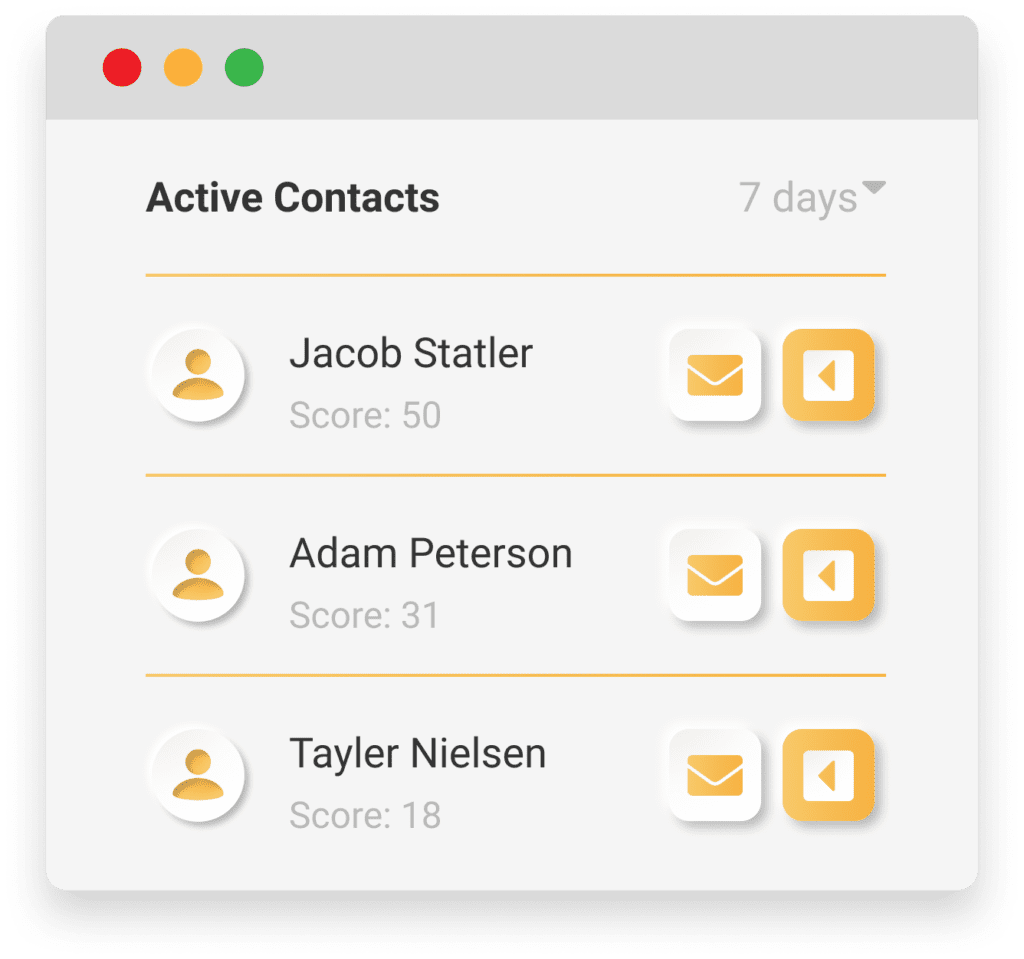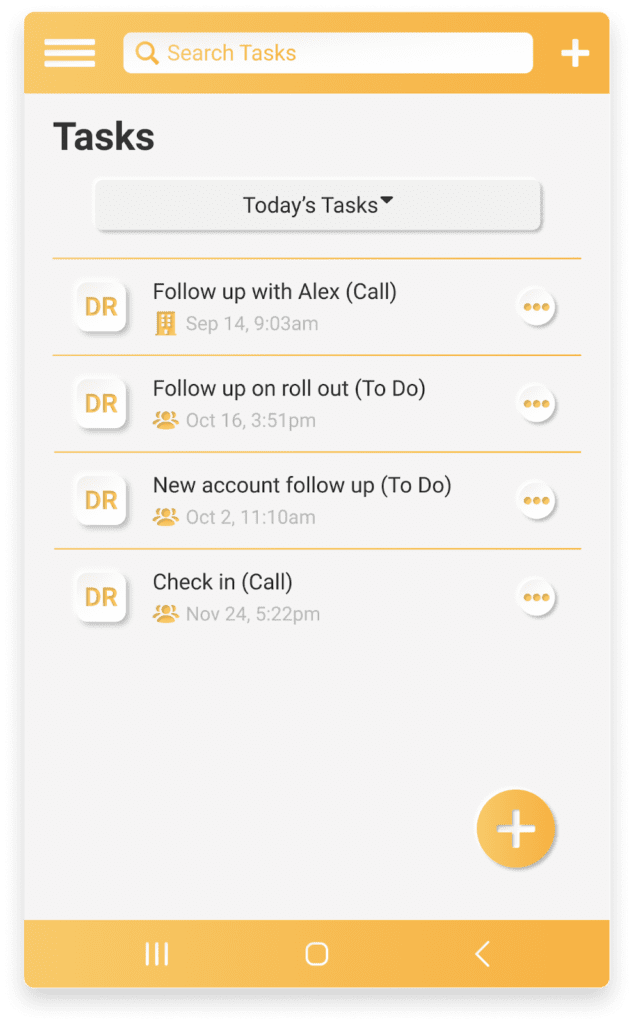Last updated on August 7th, 2023

Today, you’ll gain actionable information about lead distribution that will systemize how your company handles new leads.
Ever lost a potential client from poor lead management?
How you distribute your leads amongst your sales team can make or break your conversion rates.
Here’s the truth:
Lead distribution becomes increasingly critical for sales team managers as your lead flow grows.
Because the more leads you have, the more likely you are to lose qualified leads from easy-to-fix issues such as simply not following up.
- What Is Lead Distribution?
- How Does Lead Distribution Benefit Your Sales team?
- How Does Lead Distribution Work?
- How To Allocate Leads: 8 Great Strategies
- How To Segment Your Leads

VipeCloud is the only Automation tool your small business needs to
be the hero to your customers.
With Email, Texting, Social, Suites, Chat, Stories, Video Email & Sign Up Forms fully built-in, we provide you with the perfect platform to grow your business.
15 Day Free Trial – Get started risk free. No CC needed.
What Is Lead Distribution?
Lead distribution is an automated way of assigning leads to the right salesperson to maximize your lead generation ROI and minimize drop-offs.
It adds efficiency to how you manage your pipeline (more on the benefits later.)
When it comes to lead distribution, there are many ways to slice the pie so that every sales rep gets their fair share of prospects.
Based on your company, the following factors can determine which rep your leads should go to:
- Geography
- Needs
- Expertise
- Rep availability
- Sales team size
And much, much more.
If the lead is the right fit, they’re assigned to the best available sales rep.
Automated lead distribution helps you reach a new level of efficiency because your leads are delegated with less effort from management.
The end goal is having structure because it’s grounds for business scalability.
How Does Lead Distribution Benefit Your Sales Team?
Later in this article, we’ll break down different lead distribution methods, each with its own benefits.
However, the following benefits are universal.
Speeds Up Your Lead Management
Lead management is crucial.
The longer it takes for a lead to be nurtured, the more likely it’ll be lost.
Picture this:
Nick, a new prospect, submits a form and it takes 1 1/2 days for someone to get back to him.
Nick is likely to be as good as gone because the likelihood of him turning cold is high.
Why is that?
The turnaround time was too slow.
A lead distribution system helps you avoid this because the minute a lead comes in, there’s already someone tasked with handling the prospect!
It’s ideal to follow-up as soon as possible because 35-50% of sales go to the company that’s first to respond.

You’re not the only company that could help the prospect, and the speed at which a salesperson gets to them correlates with better close rates.
Other factors that make speed important for handling leads include your prospect’s availability and their buying mood.
More Conversions & Less Lead Drop-offs
According to Marketo, poorly managed leads cost businesses a grand whopping total of $1 trillion (with a “T”) every year .
Low conversion rates in your sales cycle costs businesses money and time.
Distributing leads effectively throughout your sales team ensures that leads are more likely to get the nurturing they need.
How?
Valuable leads won’t be fumbled just because there wasn’t a rep pre-assigned to get in touch with the lead.
Not to mention:
When a sales rep has the luxury of niching down to only handle a specific type of lead, they can become more of an expert on that type of lead.
For example, let’s say you’re a marketing agency that helps a variety of industries, but one of your sales reps mostly sells to B2B fintech companies.
That rep will gain more B2B fintech experience, which will result in them becoming more of an industry expert.
And when a prospect feels like you understand them better, they’ll build trust with you easier.
Better Measurement Of Sales Rep Success
With each of your sales reps getting their fair share of leads each month, you can gather better data on their performance.
And better data means you’ll be able to track and find opportunities easier.
How?
Not all leads are equal.
Some leads might be inbound, outbound, from different industries, from different marketing channels, or from various size companies. (The list could go on…)
So if you don’t segment your lead data, you’re missing out on more-detailed insights about your sales team performance.
How Does Lead Distribution Work?
Now, let’s go over how lead distribution works, and how it falls into your lead management system.
1. Capture Leads
Every sale starts in the lead generation stage.
Capturing leads might be done through avenues like email, social media, digital ads, messaging, and more.
When a lead is brought in, they become known as an MQL (Marketing Qualified Lead).
An important thing to note about capturing leads with outbound versus inbound:
With outbound lead generation, you can control who your leads are since you’re reaching out to the lead.
(Unlike inbound lead generation where the leads come to you.)
Why does this matter?
Sales teams who do outbound lead generation should start their lead distribution process in their “prospecting” phase.
For example, if one rep is focusing on leads that are located on the east coast of the United States, they should prospect for leads on the east coast.
2. Qualify Leads
Lead qualification is the critical process of assessing the potential a lead has for becoming a client or customer.
It can happen before a rep contacts a lead and during the discovery phase of the sales process. (You should do both for efficiency’s sake.)
For doing lead qualification at scale, it’s ideal to use a lead scoring software integrated into your CRM.
With an overview of the interest of all your leads, you can create a benchmark (score) of the leads you want to distribute to your sales team in a push or pull-based fashion (more on this soon).

A contact scoring system will help qualify the leads (at scale) so that each rep gets the best quality.
Quality of leads is a foundational element of lead distribution because you get more flexibility with what distribution method you want to use.
3. Distribute To A Sales Rep

After your lead qualification stage is over, it’s time for your sales reps to step up to the plate.
At this stage, your leads are now SQLs (Sales Qualified Leads), and they should be allocated to a rep.
You can distribute leads to your team in numerous ways, which our next section will explain.
How Do You Distribute Leads?: 8 Great Strategies
The first 6 lead distribution strategies will be separated into 2 sections (3 strategies in each section).
Then we’ll end off with the final 2 strategies.
Push-Based Lead Distribution
Push-based lead distribution is sort of what the name entails.
This means that a lead is being assigned (pushed to) a sales rep rather than being picking for themselves.
The following 3 lead distribution strategies are pushed-based.
#1: Top Performers
In this lead distribution method, salespeople that perform the best and reach good company sales metrics get their pick of leads.
On the one hand, “Top Performers” is an excellent approach because it incentivizes your team to perform their best if they want easier opportunities to close and earn higher commissions.
But on the other hand, this may get messy if your leads start to pile up hard.
Here’s what I mean:
If leads are pouring in and your best reps are getting the best prospects, it creates an upward (positive) and downward (negative) spiral for your sales team at the same time.
The reps who don’t perform as well will more than likely continue to see bad sales conversions on their end because they don’t really get a “break” from the not-so-great leads:
Which could end up lowering their morale.
Another downside?
If your elite reps are constantly busy managing leads, there’s less time for them to do other required tasks on their CRM (emails, social media, etc.).
Overall, if your sales team and company is somewhat small, this lead distribution approach could be worthwhile.
But for larger companies?
You could run into more performance headaches than you’d want to deal with.
#2: Geography
Geographic lead distribution is when salespeople are assigned leads based on a particular territory.
The sales rep could physically be in the region, but often it can be a region they are responsible for.
Distributing leads by geography allows reps to get acquainted with specific needs of the market there.
As the reps understand the needs and demographic type of that area, it gets easier for them to sell to future prospects (because they know their pain points).
You’ll even find things like timezone conflicts being less of an issue (if your company operates globally).
If you’re adopting the geographic method, it’s ideal to understand your average lead volume from your service’s biggest regions.
Why?
Put simply, it’s natural that more leads will come from certain regions than others.
If you’re a company in Canada and most of your leads are from Canada, the US, and Australia, it might be ideal to appoint more reps for those regions to compensate for volume.
This allows your team not to hit a brick wall if you see a spike in leads because you forecasted it ahead of time.
#3: Round Robin
Round robin is the “fair” version of push lead distribution because each rep takes turns with an incoming lead.
- Sales rep A follows up with lead A
- Sales rep B follows up with lead B
- Sales rep C follows up with lead C
It’s straightforward, and the workload is distributed evenly across your department.
You can create automated task reminders in your CRM to remind reps of the lead they need to get in contact with when it’s their turn.
Round Robin is ideal for a company that sells specific products to a particular niche.
For example, Company X sells Real Estate brokerage insurance.
Since all reps in Company X are specialized, whoever gets the lead should do a solid job of selling.
Suppose your company works with a broader range of prospects. In that case, it’s ideal to do a Round Robin within specialized sales organizational structures (people with expertise).
Pull-Based Lead Distribution
Pull-based has to do with sales reps having their pick of leads.
The following 3 lead distribution strategies all have to do with a pull-based lead distribution.
#4: Shark Tank
Distributing leads in a shark tank manner is all about a “first come, first serve” model.
The second a lead comes in, the first salesperson to claim the lead will get it.
A good upside of Shark Tank is that it incentivizes reps to be more competitive to get their fair share.
It’s best to have a good marketing engine that drives leads to your department when using shark tank because you want as many different reps to get a chance to close as possible.
If only a select few salespeople are getting most of the leads, you’ll run into the same limitations as in the Top Performers example.
You’re only as strong as your weakest link.
You can set up notifications to every rep when a potential deal comes in, and the first one to respond gets the bait.
#5: Cherry Pick
Cherry Picking is good for when there is an abundance of leads.
Sales reps manually choose their prospects based on what’s available.
It differs from “Shark Tank” in that the reps can claim more than one lead and they can work at their own pace while also claiming first dibs.
So basically, reps get to create their own pipeline from the leads.
The Cherry Pick model allows reps to manage their workload better, but they should still be encouraged to meet their numbers from sales leaders.
In sales team meetings, let your reps know to go after the “smaller” deals that don’t seem as appealing.
Smaller leads can still be upsold on different products that help solve their problem.
And it makes your company look better when you follow up with any lead, no matter the size.
#6: Blind Pull
You know those game shows where participants choose between hidden prizes?
That’s what blind pull is all about!
In this distribution method, sales reps claim a lead without knowing the details (problem, deal size, company, etc.).
An upside to Blind Pull is that fact reps are more likely to get in contact with the lead because there’s no factor (i.e. smaller deal size) that incentivizes them not to.
With a Blind Pull, sales leaders should segment leads by industry or other commonalities in order to bring them to specialized reps.
It’s better this way because it lowers the “surprise” factor if your company works with a broad array of clients.
So essentially, the only thing reps would know is the name of the lead and their industry (or whatever segmentation you’d like).
A CRM is a perfect way to segment their pipeline into niches by adding tags to each contact.
This is an effective way of getting the most out of Blind Pull!
#7: Manual Lead Distribution
Manual lead distribution is the more “old-fashioned” way of distributing leads. Manual lead distribution is when sales leaders assign leads to reps on a case-by-case basis.
Here are some good use-cases for manual lead distribution:
- You have a new sales team, and they need to get their feet wet in sales.
- Your team is small, and one head sales manager can handle everything.
- Reps aren’t following up with prospects promptly, if at all, and there needs to be structure.
Manually distributing leads puts you in the driver’s seat of your sales process.
However, it’s not so efficient.
With the countless tasks sales leaders have on their plate, there needs to be a way of automating lead distribution.
Especially if you don’t fit the above 3 bullet points.
You can also run into the problem of slow follow-up if there are any human errors like forgetfulness (on the manager’s part).
#8: Hybrid Lead Distribution
Lastly, Hybrid lead distribution has to do with mixing the above strategies.
When you use a hybrid approach, you do both push and pull methods in order to reach your company goals.
Reps and sales leaders need to be on the same page and fully trained on what’s being blended.
The last thing you want is confusion… sales reps already have a lot on their mind, to begin with.
You can incorporate the understanding of these methods into your sales training and meetings.
With Hybrid, you don’t want to change strategies every week — choose two that you can blend well together and stick with it.
Your sales metrics are the right tool to figure out how your lead distribution method is working.
How To Segment Your Leads For MAX Effectiveness
One thing that makes all of the strategies more effective is automation — which is where segmentation and a CRM come in.
When distributing leads amongst a sales team you NEED to segment your contacts and leads.
Why?
Crucial data, information, and research can be easily lost when they’re not connected to a lead’s contact info.
Segmenting your leads is easy with a sales CRM like VipeCloud.
With VipeCloud, you can create sign up forms that extract valuable lead data.
The best part?
All of that data is automatically added to your database of contacts.
Want to see how VipeCloud can arm your sales team with an arsenal full of lead generation, sales, and CRM tools?
Try Vipecloud’s Sales CRM 15-days for free today.
Lead Distribution FAQ
The continual process of acquiring, qualifying, and routing leads to the appropriate sales professional on your team is known as lead distribution.
Implementing a distribution plan allows you to reach out to leads faster, provide them with the greatest possible experience, and, ultimately, complete more business.
Round-robin assignment is a lead distribution strategy that indicates that each new lead is assigned to a different user until everyone has been assigned the same amount, at which point the cycle begins again.
For instance, suppose you have three users:
User 1 is assigned Lead 1
User 2 is assigned Lead 2
User 3 is assigned Lead 3
The lead rotator is a workflow operation that assigns leads to a certain group of individuals.

Leave a Reply